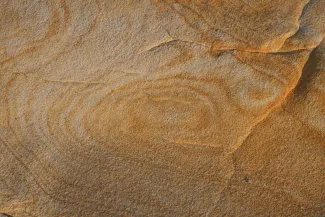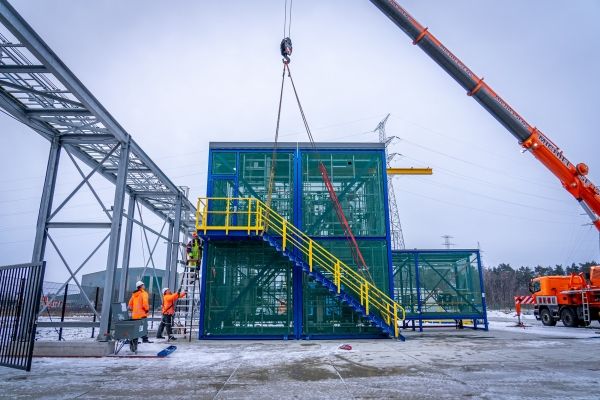
How do we extract geothermal energy?
If the heat doesn’t naturally reach the surface, like in volcanic areas, we lend a hand to extract it from the ground. On a small scale, for indirect use, this is done with a shallow borehole and a heat pump. But what if you want to use it on a larger scale? In that case, there are three ways to harness geothermal energy.

Hydrothermal system
This is the most common method because it’s a simple and reliable concept.
Practical example: the Balmatt plant in Mol.
Theory
- Hot water is pumped up through one or more production wells.
- The heat is then transferred to an application via a heat exchanger.
- The cooled water is pumped back into the ground through one or more injection wells.
Conditions
To generate the required amount of energy with this system, the following 3 factors need to be considered:
- The temperature difference that can be effectively used
- The water flow rate
- The heat supply speed in the ground; this is related to the permeability of the rock, the local heat supply from depth, and the thermal properties of the underground.
Ideally, you want a layer of earth with enough pores and cracks that allows water at the right temperature to flow easily.
In practice
Two types of wells are drilled: a production well and an injection well. These wells are not located right next to each other deep underground. The reason? The cooled water that is pumped back through the injection well should not immediately be pumped back through the production well. By keeping the distance large enough, the water has a chance to warm up again.

Hot Dry Rock
When the conditions for a hydrothermal system aren’t met, geothermal energy can be extracted by using the dry, hot rock at great depths underground, which is why it’s called Hot Dry Rock.
Theory
- For this, two or more wells are drilled.
- The rock around the wells is fractured by injecting liquid under high pressure. This method is commonly referred to as "fracking." The term "fracking" comes from the word "fracturing," which refers to the process of breaking the rock at great depths.
- A connection is then made between the wells.
- Water is pumped around, heating up as it passes through the fractured rock.
In practice
Tests were carried out in France and the United Kingdom based on the theoretical principle described above, which proved the theory. In the future, this solution could be used worldwide if it can remain cost-effective. The high cost of building an artificial reservoir at great depths, however, is a disadvantage for scaling up such projects.
Single well
Another solution for when the conditions for hydrothermal energy extraction aren’t met is the use of a vertical heat probe or another loop system. This is commonly used for shallow applications but can also be deployed at greater depths. The key difference from the Hot Dry Rock method is that the underground is not or only slightly fractured.
Practical example: Prenzlau, Germany
Theory
- One well is drilled. In the case of a single well, the borehole is very deep.
- A piping system inside the well allows cold water to flow down one pipe, warming up as it goes, and is then pumped up through the other pipe.
- In rare cases, two boreholes are made, but with a vertical connection between them, so a loop is still created.
There are also two types of systems:
- Open system: The fluid used is usually water. In the heat zone, the borehole is left open, allowing the water to come into contact with the rock.
- Closed system: These systems use water, glycol, or CO2. The borehole is fully sealed, so there’s no contact between the fluid and the rock. Pressure is closely monitored with a system to quickly detect any leaks.
In practice
In Prenzlau, Germany, this principle has already been successfully applied. The main advantage of this technique is that the extraction is independent of the ground layers and therefore not reliant on the flow properties. However, the volume of geothermal energy extracted is smaller compared to methods like the hydrothermal system.



